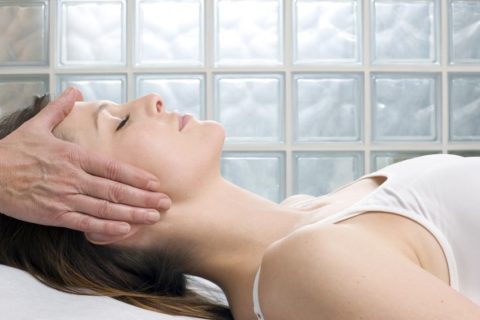
According to the International Headache Society, there are 14 distinguishable headache disorders. Headaches can be caused by tension, migraines and neck dysfunction, but also head injury, jaw disorders and neck trauma. Depending on the disorder, physical therapy can help with several of these types of headaches.
Have you ever felt a headache that felt like a deep, aching pain that often feels like tightness around the forehead or around the sides and back of your head? You are most likely experiencing a tension headache. The most common trigger for this headache is, you guessed it, stress. Shoulder and neck muscles are often tight and tender. Headaches that originate from jaw pain can also result in tension headaches.
On the other hand, cervicogenic headaches usually originate from an underlying neck problem that referred pain to the head. Pain is typically on one side of the head and headache symptoms are usually accompanied by neck pain. You may feel symptoms at the base of the skull, behind the eye or towards the face or eye.
This is one of my favorite exercises to give to my patients. Almost everyone who works in an office at a desk is guilty of hunching over their desks and hiking up their shoulders. Chin tucks are a great way to align your head, neck, and shoulder posture.
How to: Sit up tall with your buttock against the back of the seat and back straight against the back of the chair. Bring your chin towards the front of your throat without tilting the head. A funny analogy I like to make is “give yourself a double chin without tilting the skull down”. Hold this position for 5 seconds and then relax. Repeat this 10 times each hour.
From hiking up our shoulders when sitting, our upper trapezius often become stiff and tight. This stretch will help loosen the tops of your shoulders.
How to: Start by sitting or standing upright. Bring your right ear down to your right shoulder. Do not let your right shoulder hike up to meet the ear and make sure the left shoulder does not hike up either. Staying in this position, take the right hand and bring it up and over the top of the left side of the head. Gently pull the head to the right, and you should feel a pull along the left shoulder and neck. Hold this position for 30 seconds and then return to mid-line. Repeat this exercise on the other side. Repeat 2-3 times on each side.
This is great for improving back and neck mobility among those who find themselves sitting for long periods of time at work.
How to: Begin with hands and knees on the floor, with knees under hips, and wrists under shoulders. Begin in a neutral spine position, with the back flat and abdominal muscles engaged. Inhale and let your back arch, lifting your head and tailbone. Then exhale while rounding your spine up to the ceiling, pulling abdominals towards the spine and simultaneously tucking the tailbone in and tucking the chin towards the chest. Repeat between these two positions while inhaling and exhaling. Repeat for one minute.
This is great to improve your neck mobility, especially if you feel stiff when turning your head from left to right.
How to: Begin by standing straight. Turn your head to the right and look over your right shoulder until you no longer can then hold this position for 10 seconds. Return to facing forward then repeat on the left side. Repeat this sequence 3 times on each side.
Bored at your desk? This is the simplest exercise to perform when sitting at work. It helps combat the forward head and rounded shoulders posture that we often see in the office.
How to: Start by relaxing the tops of your shoulders, pretend there is a tennis ball located between your shoulder blades, then pinch your shoulder blades together to squeeze the "ball". Repeat 10 times every hour